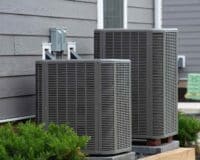Yes, it’s been 60 degrees the past 2 weeks, and the least of your worries have been frozen pipes. Procrastinating winterization is no surprise as we all want to soak up the last days of beautiful weather before being stuck in hibernation. However, make no mistake, freezing temperatures are upon us, so it’s extremely important to take care of your home to make sure no serious damage occurs in these upcoming winter months. Since water expands when frozen, it puts pressure on your pipe from the inside which can cause a sudden burst, leading to water and plumbing damage. Now, who wants that? All it takes is an outside temperature of 20 degrees to cause frozen pipes in your home, so it’s best to take preventative measures to ensure a trouble-free winter. Below you can find how to prevent and protect your pipes, as well as what to do when they have already frozen.
Who Cares If My Pipes Freeze?
You should! Aside from serious plumbing damage, frozen pipes can provide other serious damage throughout your home. Frozen water in pipes can cause them to burst, leading to serious water damage and potential flooding in walls and floors. They also can lead to a lack of running water, providing a major inconvenience, making the simplest of daily tasks a challenge.
How to Prevent Frozen Pipes
Your first step should be to drain any water lines that are directly outdoors, including a swimming pool and water sprinkler supply lines. Also, remove any hoses attached to the house, shutting off water access to the said spigot, again allowing it to drain. Anything with direct contact with the outdoor elements is extremely susceptible to becoming frozen, so it’s important to get all that water out to prevent any damage.
How to Protect Pipes from Freezing
Unfortunately, these pipelines aren’t the only ones at risk. In order to protect pipes in your attic or basement, it could be necessary to add insulation to these areas in order to trap the heat. Insulation can be added to the whole surrounding area or directly to the pipes. There are certain products like pipe sleeves or UL-listed heat tape that can be installed to give your pipes that extra protection you may need against the harshest of winter weather. It’s also important to keep your home heated at a consistent temperature during day and night, which may result in a higher heating bill but is much better than repairing a burst pipe which can be quite costly.
Are My Pipes Frozen?
One of the first signs of frozen pipes that homeowners will notice is the lack of water coming out of their faucets. This can mean either no water at all or a slight trickle of water. Another sign that your pipes might be frozen is the presence of frost accumulated on the exterior of exposed pipes. This can also help pinpoint where on the pipeline the freezing has occurred. It is important to act diligently at either of these signs to prevent any further damage from occurring.
Help! My Pipes Are Frozen!
What happens when it’s too late to take precautionary measures because your pipes are already frozen? The first step would be to leave the faucet open, that way you know when the blockage has frozen pipe has melted. Then, you should apply heat to the section of the frozen pipe. Heat can be applied in a number of ways, including electrical heating pads, hairdryers, portable space heaters, or by simply wrapping the pipes in towels soaked in warm water. It’s extremely important to refrain from using open flame devices, as that can add further damage to your pipes. Make sure to remain applying heat until the full water pressure is restored.
If you are having trouble locating a potential freeze or it’s too late and damage has occurred, don’t hesitate to call Greenwood Plumbing and Heating at 401-738-9245. We offer 24/7 emergency heating and plumbing services and would be more than happy to help and answer any of your questions! Have a safe winter!


